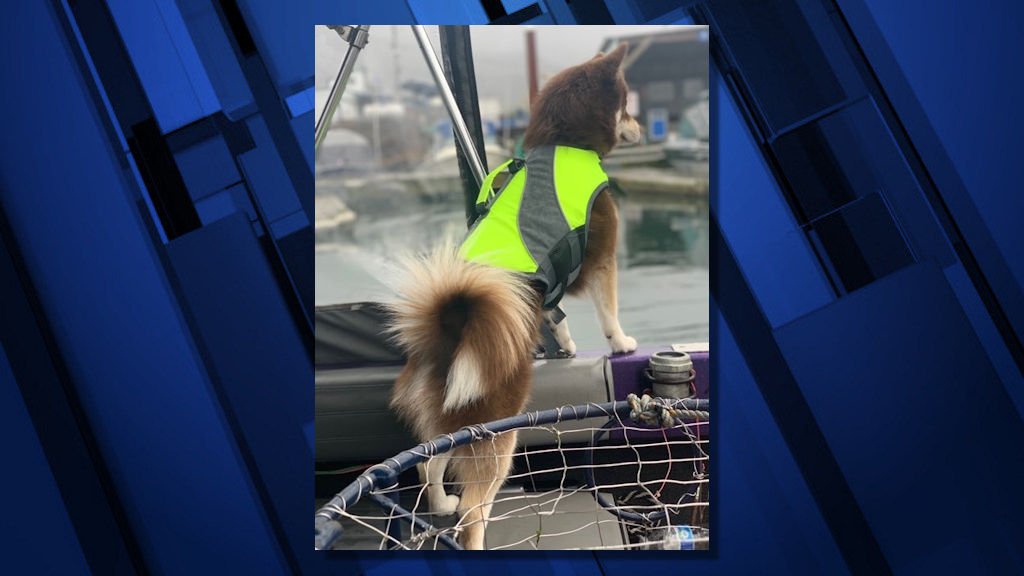As summer fun beckons, Oregon boaters urged to plan ahead, pay attention, share the water

SALEM, Ore. (KTVZ) -- There’s something magical and alluring about boats - and such a wide variety on the market. Regardless of what’s calling you to the water and the type of boat you’re in, be sure to plan ahead, pay attention and share the water so everyone can have a fun time.
The Oregon State Marine Board invites boaters to explore the Boat Oregon Online Map, where you can find a boat ramp near you. Take a few minutes to plan ahead and check out the Marine Board’s interactive boating access map with all of the public boat ramps and data layers including local rules for boat operations. Check the weather forecast, water levels or tides, see if there are any reported obstructions, and have the right gear for the activities you’re doing. Boaters can also check the Marine Board’s website to find out what equipment is required based on the size and type of boat.
“Be sure to keep a sharp lookout by paying attention to your surroundings, continually scanning port to starboard and keeping a close eye on what’s ahead,” says Brian Paulsen, Boating Safety Program Manager for the Oregon State Marine Board. “Brush up on the rules of the road, start out slow because of debris in the water from this past winter, and whatever you do – don’t text and drive. Taking video and pictures, along with social media texting can be fun, but the operator needs to maintain focus and awareness to what’s going on around them,” says Paulsen. “The captain is responsible for the safety of everyone on board, but everyone needs to pitch in and be an active, alert crew, working together.”
High water levels in some areas this spring cover many wing dams (also known as pile dikes) on rivers and bays and are just below the surface. Paulsen adds, "Motorized boaters need to keep their distance from the shoreline up to several hundred feet out, so they don’t inadvertently hit one of the piles.” Boaters are encouraged to learn where the wing dams are located based on the waterbody where they’re boating from NOAA Charts. The navigation charts can be downloaded for free.
The Marine Board also recommends boaters play it safe by:
- Boat Sober. Abstain from consuming marijuana, drugs or alcohol, which impair judgment, reaction time, and coordination and cause dehydration. Instead, take along a variety of non-alcoholic beverages and plenty of water. Impairment can lead to a BUII arrest. Every boat operator needs all their senses on high alert because conditions change quickly. Swift currents, changing weather and debris require boat operators to be focused and skilled to avoid an accident. Waterway congestion with other river recreators also demands sharp situational awareness.
- If you are feeling tired, take a break on land and return to the water when you are re-energized and alert. Wind, glare, dehydration and wave motion contribute to fatigue. Continually monitor the weather because it changes quickly.
- Operators and passengers should wear properly fitting life jackets. Learn more about life jacket types, styles and legal requirements. Anyone boating on Class III whitewater rivers is required to wear a life jacket, and all children 12 and under when a boat is underway. The water temperature for most waterways is below 50 degrees this time of year and wearing a life jacket is the most important piece of equipment for surviving the first few seconds of cold water immersion. What’s the downside to wearing one?
- Never boat alone – especially when paddling. Always let others know where you are going and when you’ll return. Print out a downloadable float plan to leave with friends and family.
- Be courteous to other boaters and share the waterway. Congestion is a given in many popular locations, especially with nice weather. By staying in calmer water near the shore, paddlers can help ease conflict with motorized boats and sailboats that need deeper water to operate. Non-motorized boats are encouraged to use the shoreline adjacent to the ramp to help ease congestion and operate closer to shore where there are larger motorboats nearby. Regardless of your boat type, stage your gear in the parking lot or staging area prior to launching your boat. This makes launching faster and everyone around you, happier.
- In Oregon, all boaters must take a boating safety course and carry a boating safety education card when operating a powerboat greater than 10 horsepower. Paddlers of non-motorized boats 10’ and longer are required to purchase and display a waterway access permit. The Marine Board also offers a free, online Paddling Course for boaters new to the activity. Boaters engaged in towed watersports in the Newberg Pool on the Willamette River between river miles 55 (confluence of the Yamhill River) and 26.6 (Willamette Falls) need to also take a Towed Watersports Education Course and boat owners need to apply for a Towed Watersports Endorsement verifying the maximum load weight for the boat is under 5,500 pounds.
For more information about safe boating in Oregon, visit Boat.Oregon.gov.